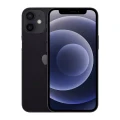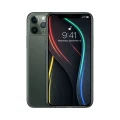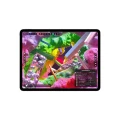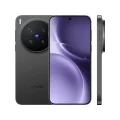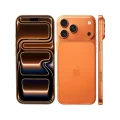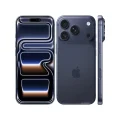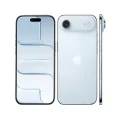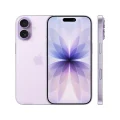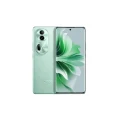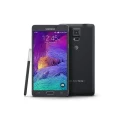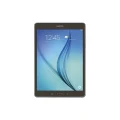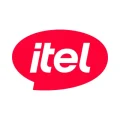- Home
- All Products
- Apple
- Apple iPhone 4
Apple iPhone 4
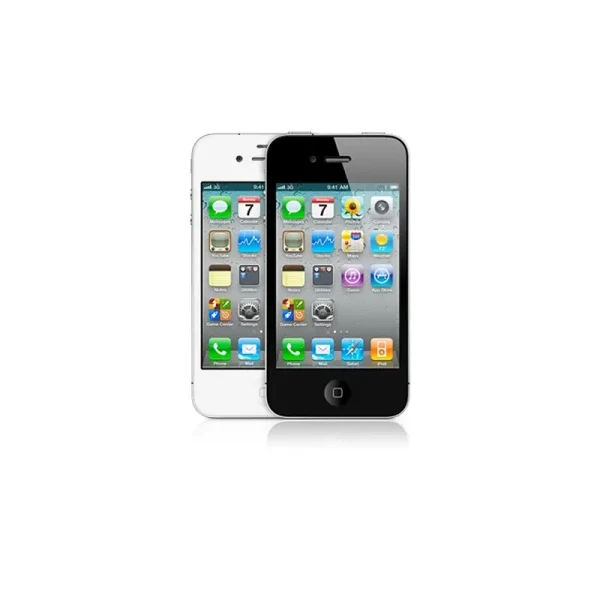



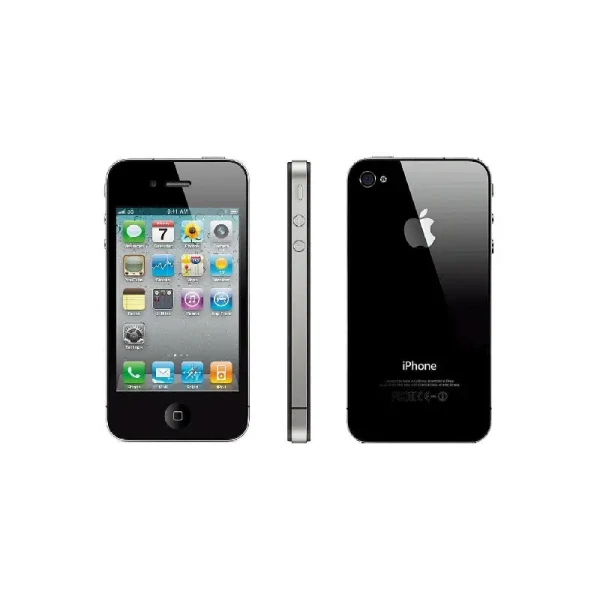
-
Battery: Li-Po 1420 mAh
-
RAM: 512MB, 512MB, 512MB
-
Storage: 8GB, 16GB, 32GB
-
Display: IPS LCD, 3.5 inches
-
Camera: Rear 5 MP, and Front VGA, videocalling over Wi-Fi only
-
OS: iOS 4, upgradable to iOS 7.1.2
Full Specifications
Price
| Official | 15999 BDT 512MB/8GB Approx. |
General
| Model | Apple iPhone 4 |
| Announced | 2010, June |
| Released | 2010, June |
| Status | Discontinued |
Design
| Dimensions | 115.2 x 58.6 x 9.3 mm (4.54 x 2.31 x 0.37 in) |
| Weight | 137 g (4.83 oz) |
| SIM SIM (Subscriber Identity Module) is a small card that contains mobile network subscriber's account information. This allows the phone using the card to attach to a mobile network. The SIM card is most commonly associated with GSM and UMTS mobile networks. Moving a SIM card from one phone to another allows a subscriber to switch mobile phones without having to contact their mobile network carrier. SIM cards can also be used by a phone to store limited amounts of data, such as phone numbers and text messages. |
Micro-SIM Scratch-resistant glass back panel |
| Colors |
Black, White |
Display Specification
| Display Type Display Technology => A number of display technologies and types used in mobile phones => TFT (Thin Film Transistor), IPS (In-Place Switching), OLED (Organic Light Emitting Diode), AMOLED (Active-Matrix Organic Light-Emitting Diode), Super AMOLED (an even advanced version of AMOLED), Resistive Touchscreen (Resistive touchscreens contain two layer of conductive material with a very small gap between them which acts as a resistance), Capacitive Touchsceen (Capacitive touchscreen technology consists of a layer of glass coated with a transparent conductor) | IPS LCD |
| Size | 3.5 inches, 36.5 cm2 |
| Resolution | 640 x 960 pixels, 3:2 ratio |
| Pixel Density Pixel Density (PPI) is refers to the concentration of pixels on a particular display, measured in pixels per inch (ppi). Pixel density is calculated by dividing the diagonal pixel resolution of a display by its diagonal size, higher pixel density better display quality. | 330 ppi density |
| Display Protection Display Protection => Gorilla Glass is a special alkali-aluminosilicate glass shield with exceptional damage resistance that helps protect mobile displays from scratches, drops, and bumps of everyday use, It is always better to go for a smartphone with Gorilla Glass for that added protection and peace of mind. | Corning Gorilla Glass, oleophobic coating |
| Features | 54.0% screen-to-body ratio |
Platform
| Operating System OS => Every computer system run on a base software called Operating System (OS). Operating System controls all basic operations of the computer (such as smartphone, PDAs, tablet computers and other handheld devices). The Operating System allows the user to install and run third party applications (apps), apps are used to add new functionality to the device. | iOS 4, upgradable to iOS 7.1.2 |
| Chipset Chipset is a group of integrated circuits designed to perform one or a more dedicated functions, often with real time computing constraints, Popular smartphones are equipped with more advanced embedded chipsets that can do many different tasks depending on their programming. | Apple A4 (45 nm) |
| CPU CPU (Central Processing Unit) mostly known as processors, CPU processes instructions in order to carry out certain functions that make your device operate properly. Processors are often described as the brain of computers, smartphones and tablets, Smartphones and tablets rely on processors to carry out their every task, Processors are an incredibly important factor in selecting any type of computing device, including your smartphone. | 1.0 GHz Cortex-A8 |
| GPU GPU (Graphics Processing Unit) is a single-chip processor designed to rapidly manipulate and alter memory to accelerate the creation of images in a frame buffer intended for output to a display, This includes things such as lighting effects, object transformations, and 3D motion. | PowerVR SGX535 |
Main Camera
| Camera Setup | Single |
| Resolution |
5 MP, f/2.8, 1/3.2", 1.75µm, AF |
| Features |
LED flash, HDR |
| Video | 720p@30fps |
Selfie Camera
| Camera Setup | Single |
| Resolution |
VGA, videocalling over Wi-Fi only |
| Video | 480p@30fps |
| Features | - |
Network & Connectivity
| Technology | GSM / HSPA |
| Speed | HSPA 7.2/5.76 Mbps |
| Wi-fi Wi-Fi is a popular wireless networking technology using radio waves to provide high-speed network connections that allows devices to communicate without cords or cables, Wi-Fi is increasingly becoming the preferred mode of internet connectivity all over the world. | Wi-Fi 802.11 b/g/n, hotspot |
| Bluetooth Bluetooth is a wireless communications technology for exchanging data between mobile phones, headsets, computers and other network devices over short distances without wires, Bluetooth technology was primarily designed to support simple wireless networking of personal consumer devices. | 2.1, A2DP |
| NFC NFC (Near field communication) is a set of standards for smartphones and similar devices to establish peer-to-peer radio communications with each other by touching them together or bringing them into proximity, usually no more than a few inches. | No |
| Positioning |
GPS, A-GPS |
| FM Radio | No |
| USB | 2.0 |
| 2G Network |
GSM 850 / 900 / 1800 / 1900 |
| 3G Network |
HSDPA 850 / 900 / 1900 / 2100 |
Battery
| Battery Type Battery Type => Cell phones run on various kinds of batteries depending on the manufacturer, phone size or shape and features. There are basically four types of cell phone batteries => Lithium Polymer, Lithium Ion, Nickel Metal Hydride and Nickel Cadmium. | Li-Poly (Lithium Polymer) |
| Capacity Battery Capacity is a measure (typically in Amp-hr) of the charge stored by the battery, and is determined by the mass of active material contained in the battery. The battery capacity represents the maximum amount of energy that can be extracted from the battery under certain conditions. | 1420 mAh |
| Removable | No |
| Charging | - |
| Wireless Charging Wireless Charging (Inductive Charging) uses an electromagnetic field to transfer energy between two objects. This is usually done with a charging station. Energy is sent through an inductive coupling to an electrical device, which can then use that energy to charge batteries or run the device. | No |
Multimedia
| Loudspeaker | Yes |
| Audio Jack | Yes |
Storage
| Card Slot Memory Card Slot is a special slot for inserting a memory card. Memory cards allow you to expand the phone's built-in memory, A memory card (sometimes called a flash memory card or a storage card) is a small storage medium used to store data such as text, pictures, audio, and video, for use on small, portable or remote computing devices such as mobile phones, mp3 players, digital cameras. | No |
| Internal Storage Internal Storage is a data storage space (flash memory) mostly used in smartphones, tablets and other electronic devices where operating system, apps, music, photos, videos, files and other user data Is stored. |
8GB 512MB RAM, 16GB 512MB RAM, 32GB 512MB RAM |
Sensors
| Fingerprint | No |
| Other Sensors | Accelerometer, gyro, proximity, compass |
About the Apple iPhone 4
The Apple iPhone 4, released in June 2010, is a groundbreaking smartphone that set new standards for design and performance in its era. It introduced a sleek glass-and-stainless steel body with a thickness of 9.3mm and a weight of 137g, offering a premium and compact feel. Its 3.5-inch Retina display with a resolution of 640×960 pixels and 330 ppi density delivered sharp, crisp visuals, making text, images, and videos exceptionally clear. Powered by the Apple A4 chipset and 512MB RAM, the iPhone 4 handled apps, multitasking, and multimedia smoothly for its time. Running iOS 4, upgradable to iOS 7.1.2, it brought features like multitasking, FaceTime, and Retina display optimization.
The iPhone 4 includes a 5MP rear camera with LED flash capable of 720p HD video recording and a VGA front camera for video calls via FaceTime over Wi-Fi. Its 1420mAh battery provides up to 7 hours of 3G talk time and 300 hours of standby. With Wi-Fi, GPS, Bluetooth 2.1, and a reliable iOS ecosystem, it became an all-in-one device for communication, entertainment, and productivity. The iPhone 4 was widely praised for its build quality, display, and smooth performance, and remains iconic in Apple’s history.
Main Key Features
- 3.5-inch IPS Retina display (640×960 pixels, 330 ppi)
- Apple A4 1.0 GHz Cortex-A8 processor
- iOS 4, upgradable to iOS 7.1.2
- 8GB/16GB/32GB storage, 512MB RAM
- 5MP rear camera with LED flash, VGA front camera
- 720p HD video recording
- Wi-Fi 802.11 b/g/n, Bluetooth 2.1, GPS/A-GPS
- 1420mAh Li-Po battery (up to 7h talk time)
- Glass front and back with stainless steel frame
Pros & Cons
Pros:
- Retina display for sharp visuals
- Compact and premium design
- Smooth iOS experience for apps and multitasking
- FaceTime support
- Durable build quality
Cons:
- Small screen by today’s standards
- Low RAM and an older processor for modern apps
- No card slot for expandable storage
- Limited battery life by current standards
Why Choose This Phone?
The iPhone 4 is perfect for those who want a classic, durable Apple smartphone with a compact form factor. It’s ideal for users who value design, basic multimedia, and smooth iOS performance on a smaller device.
Opinion
The iPhone 4 is a landmark device in Apple’s history, famous for introducing the Retina display and a premium glass-and-steel design. Even though its specs are modest today, it remains a reliable phone for collectors, casual users, and those who appreciate the evolution of Apple smartphones.
See Another Model:
- Apple iPhone 17
- Apple iPhone Air
- Apple iPhone 17 Pro
- Apple iPhone 17 Pro Max
- Apple iPhone 16 Pro Max
- Apple iPhone 16 Pro
FAQs about Apple iPhone 4
Q. Can the iPhone 4 be upgraded to the latest iOS?
A: No, it can be upgraded to iOS 7.1.2 only.
Q. Does it support FaceTime?
A: Yes, FaceTime works over Wi-Fi using the front VGA camera.
Q. How long does the battery last?
A: Up to 7 hours of 3G talk time and 300 hours of standby.
Q. Does it have expandable storage?
A: No, the iPhone 4 has fixed storage options only.
Q. Is the iPhone 4 still usable today?
A: Yes, for basic calls, messages, and light app usage, but it may struggle with modern apps and websites.
Give Your Review
Disclaimer Note
You can write your own disclaimer from APS Settings -> General -> Disclaimer Note.
